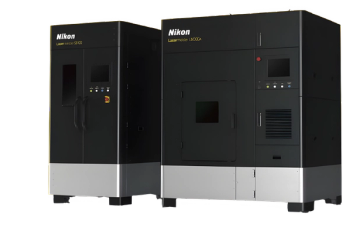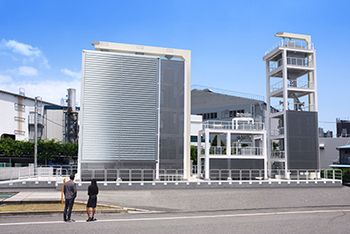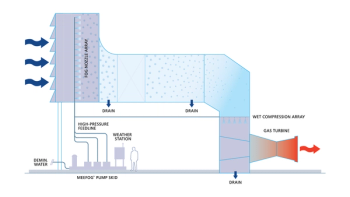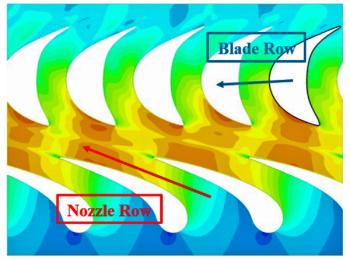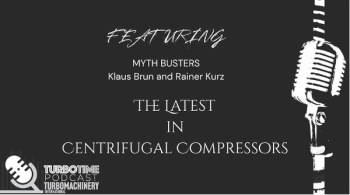
- May/June 2025
- Volume 66
- Issue 3
Exergy International: Turbo Expanders for Modular ORC Power Plants
Exergy International developed a high-speed axial turbine for waste heat recovery in organic Rankine cycle power plants.
An organic Rankine cycle (ORC) is a closed thermodynamic cycle characterized by the presence of an organic working fluid, mostly refrigerant or hydrocarbon, with a low evaporation point. It can use low- to medium-temperature heat sources for power production. Heat sources may vary from geothermal wells to industrial processes like cement or glass production and sustainable resources such as biomass or solar power.
An ORC power plant that uses heat sources from different industrial processes is often called waste heat recovery (WHR). The increasing number of WHR ORC power plants in recent years is strictly related to the latest environmental regulations and financial incentives for sustainable energy solutions and transition.
A new challenge for turbomachinery manufacturers operating in this context is the design and delivery of efficient and reliable expanders. With this goal in mind, Exergy, supported by the “Ricerca e Innova” grant from the Lombardy Regional Program FESR 2021-2027, developed a new series of turbo expanders designed for modular WHR ORC plants ranging from 0.7 – 2.0 MWe.
HIGH-SPEED AXIAL TURBINE LAYOUT
ORC WHR plants are usually characterized by a medium working fluid temperature at the expander inlet (up to 250° C) and a medium volumetric flow rate at the expander outlet (10-20 m3/s). Within this range, the radial outflow turbine (ROT) applied to ORC systems has been shown to be efficient and reliable. In the presence of ORC systems with limited volumetric flow rates at the turbine discharge (<10 m3/s), new turbomachinery configurations are being explored by Exergy to find more efficient and reliable solutions, even for small-scale plants.
Exergy developed a high-speed axial turbine (HSAT) architecture for these cases. The rotor’s high rotational speed allowed for a more compact design with limited thermal displacements and, consequently, lower radial displacements at operation. This enabled minimum labyrinth seal clearance at the rotor-stator interfaces, which positively affected the expander efficiency.
Moreover, operating with such limited volumetric flow rates and a radially compact design can potentially increase the required blade height of the turbine stages, making them easier to machine using standard manufacturing technologies (e.g., milling) rather than more expensive methods like electrical discharge machining (EDM), which is typically used for low-aspect-ratio blades.
FIGURE 1 compares the HSAT rotor for a 1-MWe WHR ORC power plant (b) with Exergy’s standard ROT solution (a) on the same scale.
TABLE 1 summarizes the positive effects of the HSAT design compared with the standard ROT solution.
The 12.2% increase in the HSAT configuration’s net isentropic efficiency is directly correlated to the stages’ reduced radial span, leading to an 80% reduction of leakage-windage losses compared to the standard ROT configuration.
A high-speed axial rotor, however, has challenges when operating at higher rotational speeds than a standard configuration. This includes accounting in the turbo-generator layout for a 4:1 gearbox reducer, which not only impacts the cost of the supplied unit but also introduces a criticality within the rotor dynamics of the complete drivetrain.
While the associated costs have been mitigated with a compact design that ensures a 20% cost reduction compared to the standard ROT design, the issues related to the rotor dynamics are addressed too, as the rotor operates well above its first lateral critical speed (FIGURE 2). In this context, commercial EDM machined journal bearings that act like tilting pad bearings have been adopted, ensuring sufficient damping and limiting the vibration amplitude during critical speed crossing at startups and shutdowns.
To minimize machining costs and limit critical part failures, the initial design of a single-component bladed rotor has been replaced by integrally bladed rotors (FIGURE 3) held together by a central tie rod.
Specifically designed friction discs have been interposed between each rotor stage to ensure torque transmission without the need for dowel pins that reduce the mechanical strength of the rotor shaft.
MECHANICAL GROUP BUSHINGS DESIGN
The turbine casing is divided into three main parts (FIGURE 4a):
- Inlet casing
- Central body
- Outlet casing
The inlet and outlet casings are radially split, and the central body is axially split. This means the patented mechanical group bushings can be shifted during maintenance, engaging an axial O-ring on each side that safely confines the working fluid (FIGURE 4b). During this procedure, the mechanical group bushings keep the rotor in place thanks to the centering notches that enable the bearings and mechanical seals replacement.
With this operation, ordinary maintenance tasks can be easily performed in half a day, guaranteeing a yearly expander availability of more than 99%.
CLEARANCE CONTROL FOR PERFORMANCE OPTIMIZATION
The mechanical group layout was easily adapted to permit small axial position adjustments to the rotor shaft. This, in combination with the sloped labyrinth seal configuration (FIGURE 5a), enabled the possibility of altering the labyrinths’ clearance, affecting the machinery’s performance.
This is achieved using variable thickness spacers between the mechanical group bushing-to-casing interface. If the labyrinth gap needs to be adjusted, reposition a variable-thickness spacer from the outlet to the inlet casing side. This causes a negative axial displacement of the rotor relative to the fixed stator casing (FIGURE 5b), reducing the labyrinth gaps and increasing expander efficiency by limiting labyrinth seal losses.
About the Author
Federico Bassi is a Product Development Engineer at Exergy International.
Articles in this issue
6 months ago
Myth: We Need That Last Percent7 months ago
Turbomachinery International: May/June 2025Newsletter
Power your knowledge with the latest in turbine technology, engineering advances, and energy solutions—subscribe to Turbomachinery International today.

